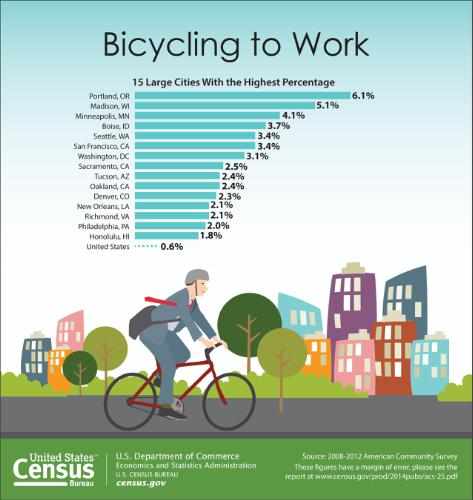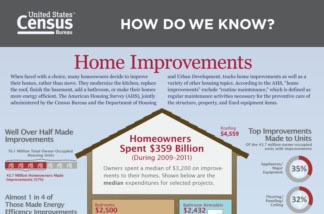Biking to Work Increased 60% over Last Decade: Report

The number of people who traveled to work by bike increased roughly 60 percent over the last decade, from about 488,000 in 2000 to about 786,000 during the 2008-2012 period.
This is the largest percentage increase of all commuting modes tracked by the 2000 Census and the 2008-2012 American Community Survey.
Many U.S. cities are seeing an increase in bicycle commuters, according to a U.S. Census Bureau report released Thursday.
The Census Bureau also released a new commuting edition of the interactive map Census Explorer, which gives Web visitors easy click-and-zoom access to commuting statistics for every neighborhood in the U.S.
It also shows how commuting has changed since 1990 at the neighborhood, county and state level — including how long it takes to get to work, commutes longer than an hour, and number of bikers.
This edition of Census Explorer uses statistics from the American Community Survey, a national source of commuting statistics down to the neighborhood level.
“In recent years, many communities have taken steps to support more transportation options, such as bicycling and walking,” said Brian McKenzie, a Census Bureau sociologist and the report’s author. “For example, many cities have invested in bike share programs, bike lanes and more pedestrian-friendly streets.”
While bicyclists still account for just 0.6 percent of all commuters, some of the nation’s largest cities have more than doubled their rates since 2000. Portland, Ore., had the highest bicycle-commuting rate at 6.1 percent, up from 1.8 percent in 2000. In Minneapolis, the rate increased from 1.9 percent to 4.1 percent.
The report also looks at the number of people who walk to work. After steadily decreasing since 1980, the percent of people who walk to work has stabilized since 2000. In 1980, 5.6 percent of workers walked to work, and that rate declined to 2.9 percent by 2000.
However, in the 2008-2012 period, the rate of walkers remained statistically unchanged from 2000. Among larger cities, Boston had the highest rate of walking to work at 15.1 percent.
The report, “Modes Less Traveled — Bicycling and Walking to Work in the United States: 2008-2012,” highlights the trends and socio-economic and geographic differences between motorized and nonmotorized commutes.
This report — the Census Bureau’s first focusing only on biking and walking to work — is one of many that examines specific aspects of commuting, including workplace location, working from home, long commutes and specific travel modes.





